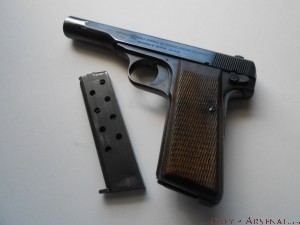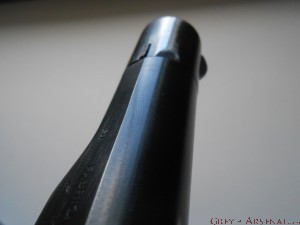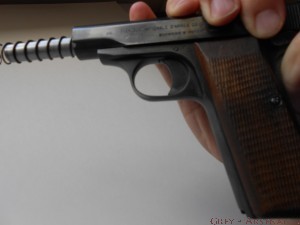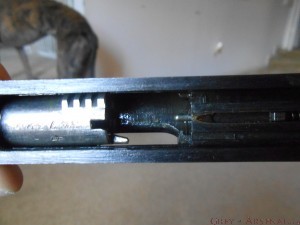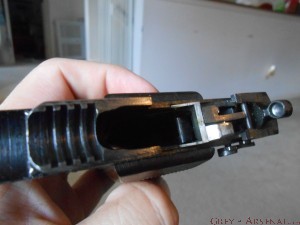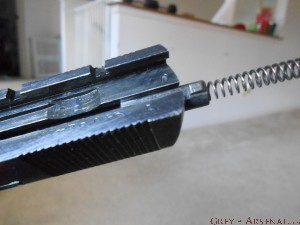So, we’ll go ahead and continue with the series on don’t-build-them-like-they-used-to handguns, and this time, we’ll be moving from Belgium to France. Specifically, Hendaye, France- as this was home to Manufacture D’Armes Des Pyrenees (MAPF) from ~1923 to 2001. From 1928 to 1944, they produced this handy little shooter, the Unique Model 17.
As you can see, the markings on the slide state 7.65 COURT 9 COUPS “UNIQUE” which, I have to admit, made identification of exact model a tad difficult. What the markings on the slide are indicating is “7.65 Short (7.54 Browning), 9 Cartridge” and then the type of weapon “Unique” which referred to the brand.
As I said, it’s pretty handy, and though it has quite a bit of heft to it, it’s very well balanced. Functionally, it’s fairly similar to a handgun I’ve previously talked about on this blog, the Colt 1903 Pocket Hammerless (misnomer, as the Colt simply had a hidden hammer). That said, the craftsmanship is no where near as fine as on the Colts or FNs from this era. The tolerances are very loose, and though when assembled and shooting it feels fine, are very noticeable when you break it down. The finish work throughout is also pretty terrible, and it shows when looking at the condition of many surviving examples.
So, on to the guide.
- Remove magazine and ensure firearm is unloaded.
- Retract slide to the point that the safety lever can be swung forward and catch the slide.
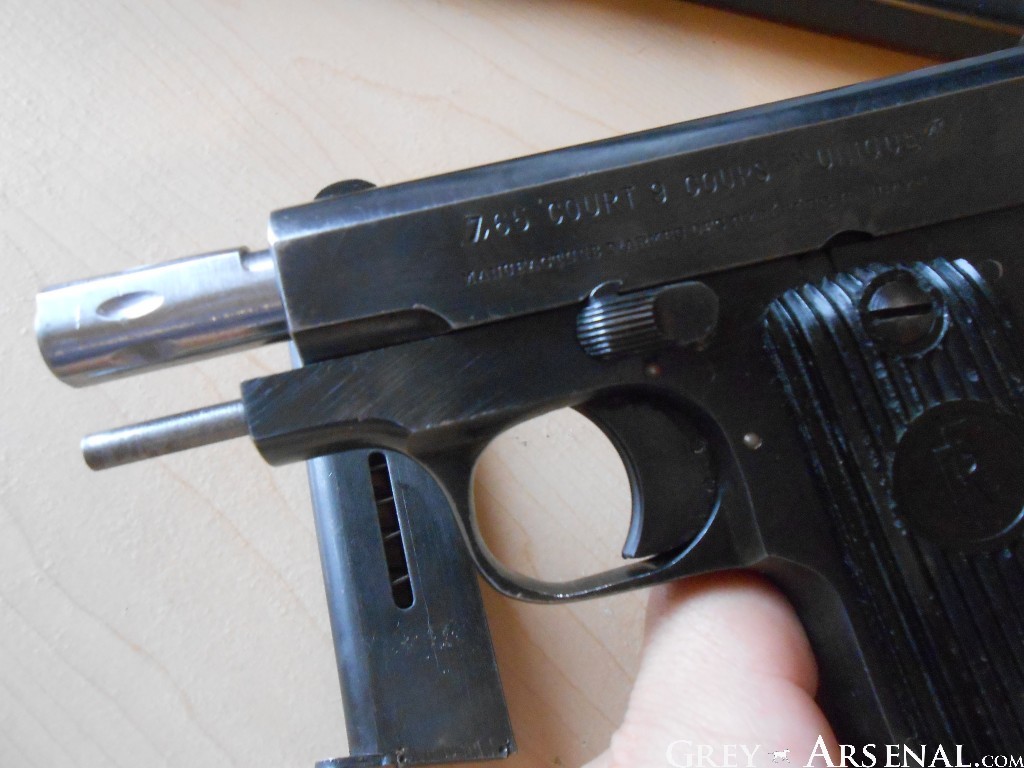
- Similar to the Colt, rotate the barrel 90^ clockwise (from front)
- Disengage catch and withdrawl the slide from the frame.
- Rotate barrel 90^ counter clockwise and remove from slide.
- Remove Guide Rod from Frame and pull the Spring off of it.

- This is as far as you need to go for a basic cleaning. Grip panels can be removed easily with a flathead screwdriver to access the Trigger Bar and clean out the Magazine Well if required.
- Clean thoroughly and oil all contact surfaces. These include the Barrel Lugs (frame and barrel), slide rails, and a light coating on the barrel itself and the Guide Rod. Basically, if it looks like something rubs it, get a light coat of something on there.
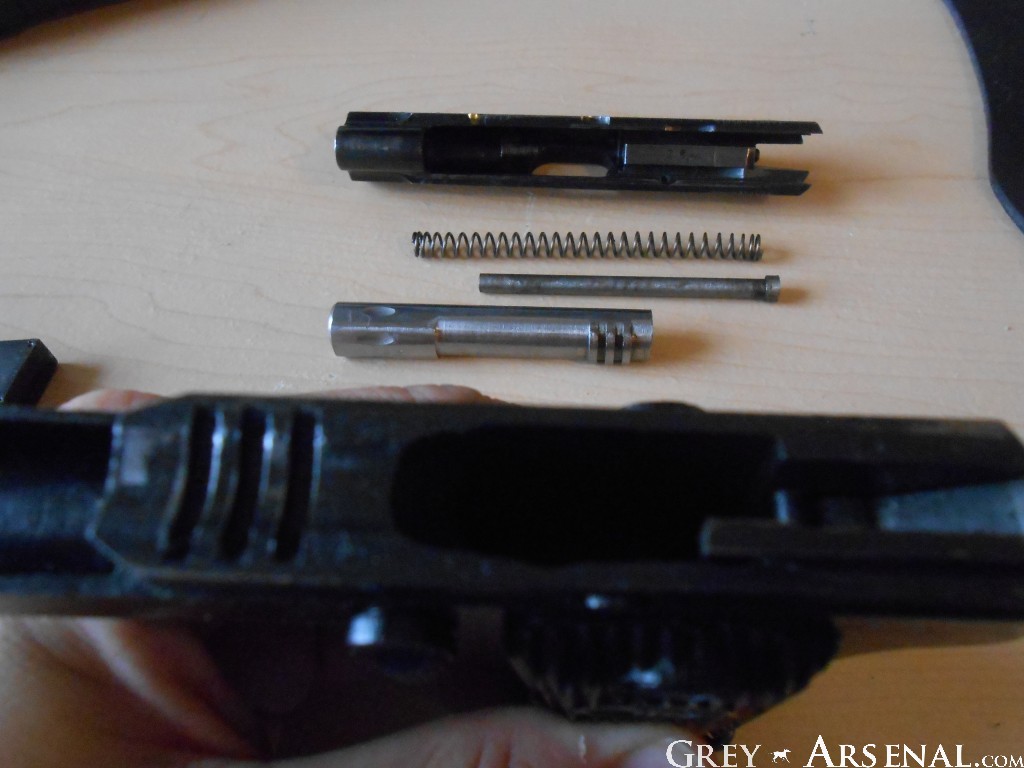
- Reassembly can be a bit tricky due to the loose-as-hell tolerances I mentioned. Getting the Barrel to re-engage with the Barrel Lugs in the frame can be a PITA since there aren’t any markings as some others (Colt) include. But, I’ll give you the foolproof method here at Grey Arsenal
- Reinsert Guide Rod into Spring, and reinsert the assembly into the hold in the Frame below the barrel, in the orientation it was originally (see earlier pictures if needed)
- Replace the Barrel into the Slide, and when able, rotate 90^ Clockwise to lock it into the slide (term used VERY loosely).
- Begin to replace Slide onto the Frame, taking care to line up the Guide Rod with it’s place in the Slide.

- At this point, things get fun, and by that I mean extremely frustrating if you haven’t done this before and aren’t using an awesome guide like mine. You’ll want to move the slide back to the point where you can engage the safety/slide lock again, but be sure to move the barrel with the slide with one of your fingers. If not, the loosey goosey tolerances will cause the Barrel to move around in there and you wont get it to engage the lugs.

- Once you have it locked up, Rotate the Barrel 90^ Counter Clockwise, which may be tough depending on the level of lubrication you gave it, and your particular Model 17. Once you’ve rotated it properly, you should be able to disengage the Safety and the slide won’t be able to be pulled off. Give it a try- if it comes off, try again. If it stays put, Congratulations.
For most owners, this handgun is the definition of a Curios & Relics class firearm, it’s an odd, storied little French autoloader that was probably handed down and down from a relative who brought it back as a WWII trophy. Although it’s a “small” caliber, as I’ve mentioned before, some hot-loaded 7.65 rounds are still no joke, especially when you have a small package like this that can have 9+1 of them being carried Condition One. Given the choice between this and a contemporary sub-compact concealed carry such as LCP or Sig P238 in .380, I’d readily choose the one that probably saw a WWII battlefield, or the mean, baguette-scented, streets of 1930’s Paris in the hands of a LEO. Did I mentioned how nicely it fits in your palm?


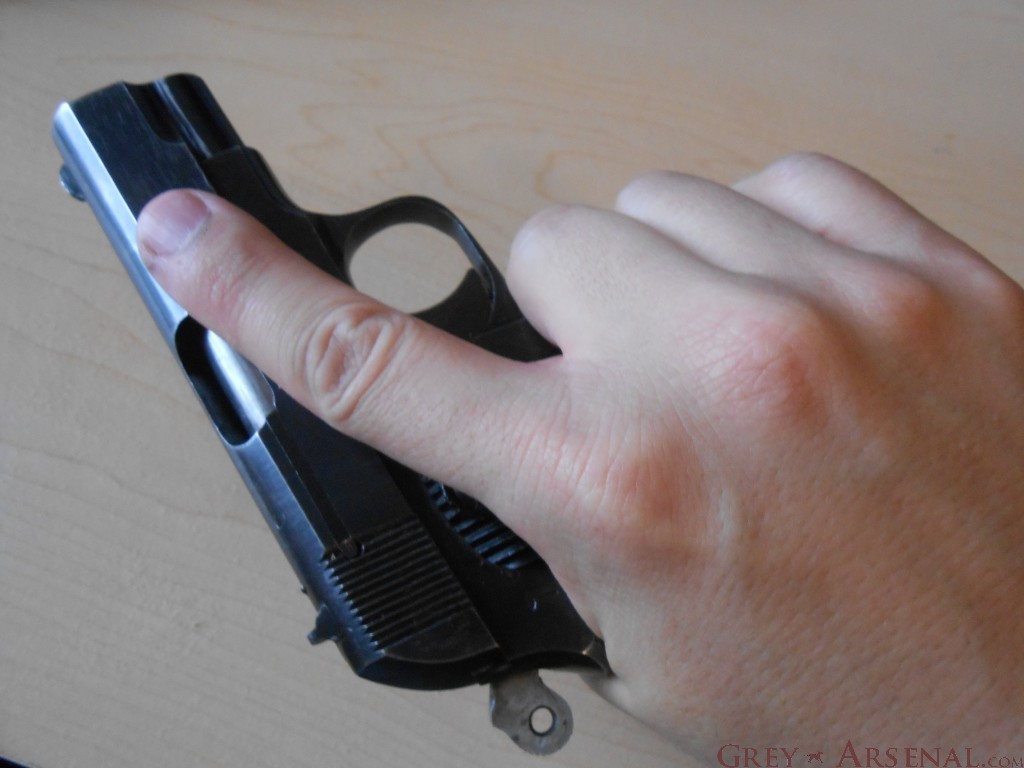




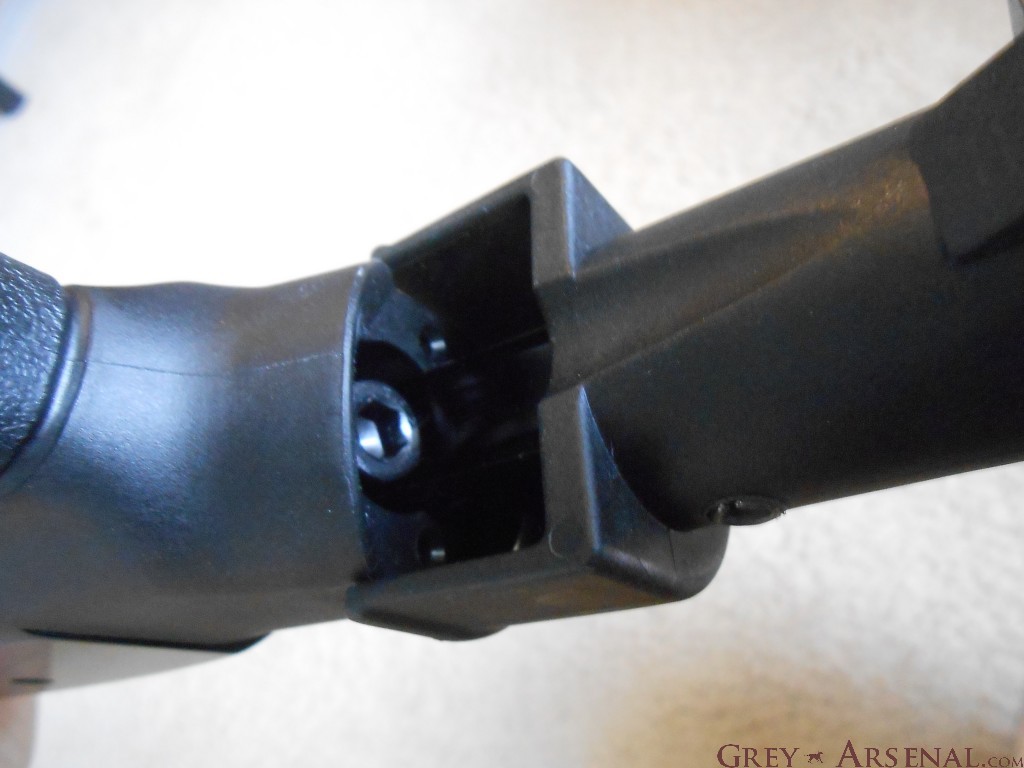
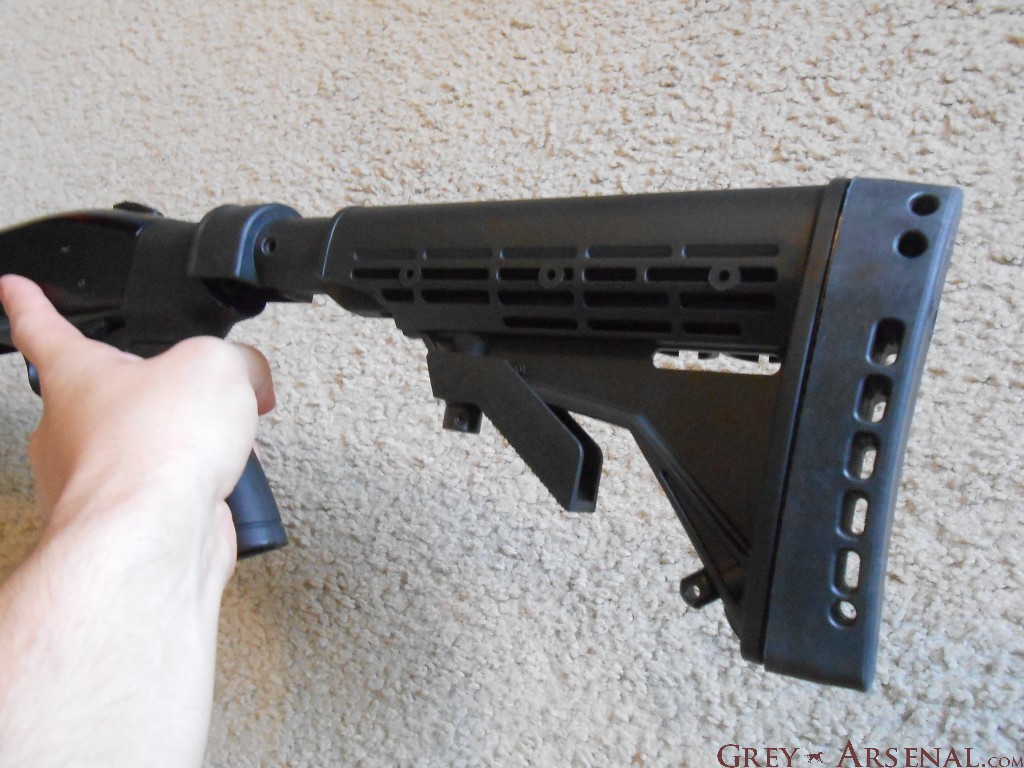
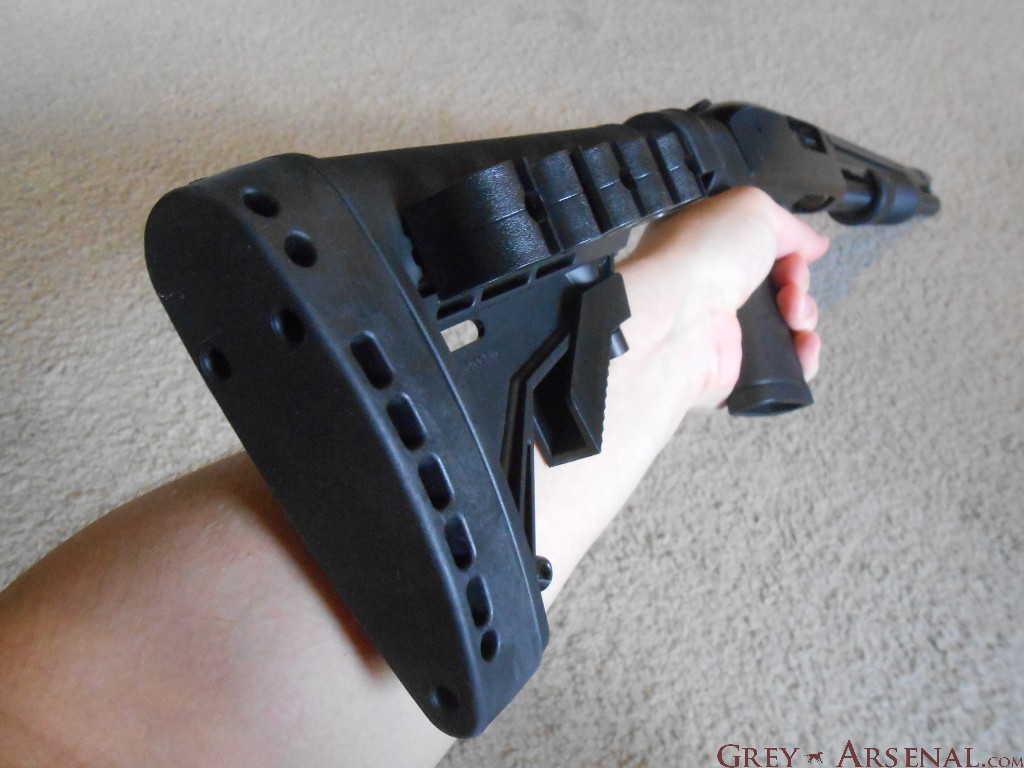

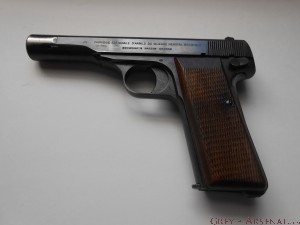

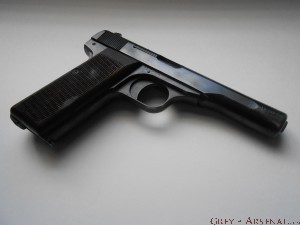 Anyhow, in 1922, some modifications to the design were made, lengthening the barrel, slide, and handgrip, lending to increased accuracy and an additional 2 rounds in magazine capacity. This was done for the purpose of military contracts. Sadly, the military they’re most associated with would be the German army, as they were produced by the Nazis after Belgium was occupied.
Anyhow, in 1922, some modifications to the design were made, lengthening the barrel, slide, and handgrip, lending to increased accuracy and an additional 2 rounds in magazine capacity. This was done for the purpose of military contracts. Sadly, the military they’re most associated with would be the German army, as they were produced by the Nazis after Belgium was occupied.